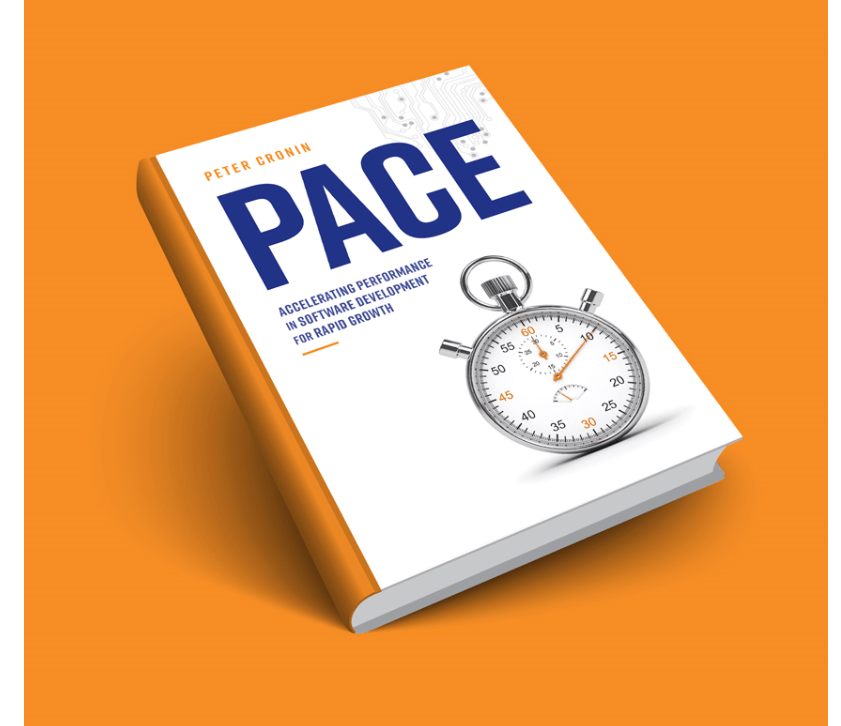Welcome to the Pace Resource Centre
Your one-stop resource for everything related to Pace

Pace Implementation Tips
Here you will find a bunch of useful videos to help you
implement the principles of Pace to your development team.
Third, Third, Third
With any change management initiative, there’s going to be a third who are excited and in; a third who are dubious and out; and a third wavering in the middle. Learn why focussing on those who are out is the wrong strategy and dooms the initiative to failure.
Make It Fun
Everyone loves an event. It’s exciting. People look forward to it. Peter explains why it’s important to launch Pace with all the fanfare and excitement you can muster —and the knock-on benefits this fanfare will deliver.
Make It About Them
Let’s face it. Deep down we’re all about ourselves (well, some more than others). Pace is no different—we all want to know ‘what’s in it for me’. Peter breaks down the benefits of communicating Pace down to each department or person’s individual level for complete buy-in and faster roll-out.
Internal Champions
Change is tough! Without management backing and internal champions it’s outright impossible. Peter outlines the critical role internal champions need to play and how it directly impacts on Pace’s success.
Co-Authorship
Co-authorship is critical to getting Pace implemented to your team and then getting it to stick. Co-authorship involves three things a): customising your Pace solution b): Implementing with—and not on—your team c): getting the team to solve their own problems.
Behaviour Change
The best laid plans are wasted without action. Peter shows how to build a team culture that makes following old habits and behaviours hard—and rewards new habits for rapid and sustained cultural change.

12 Counter Intuitive But Proven Rules
Current software development practices —
Sprints/SCRUM — are no longer keeping up with
today’s software development environment.
Scaling performance requires a new approach: Pace.
Pace consists of 12 radical and counterintuitive rules and a set of decision-
making tools that encourages rapid growth without sacrificing quality.
Bottleneck Rules
Every system has a bottleneck that limits the possible output of that system. Some software teams are organised linearly (work is passed along a chain of teams); in which case the bottleneck is one of those teams. Many software teams are self-orga nising (or at least seek to be), in this case there will be a person or function in this team which is the bottleneck.
-
Ensure there is a steady supply of work for the bottleneck
As the bottleneck controls our output, and time lost from the bottleneck is lost for the team, we ensure there is always work for the bottleneck to do. Read more
-
Offload the bottleneck from unnecessary tasks
Any work that can be done by others is disbursed to them, freeing the bottleneck up to only do work they must do. Read more
-
Plan others’ work around the bottleneck
The bottleneck’s work (including others work that requires the bottleneck) is planned first. Once it is planned, others work which does not interact with the bottleneck’s can be planned. Read more
-
Ensure quality inputs into the bottleneck
To minimise the risk of bottleneck rework, extra quality steps are introduced immediately before the bottleneck. Read more
Variation Rules
Software development is often highly variable in type and length. This makes planning and delivering work reliably difficult. Some variability is intrinsic to the type of work, for this we must ensure the teams are protected from normal variation such they can deliver consistently and at high quality.
-
Ensure the bottleneck’s work is buffered
Adding in a time buffer gives the team a shock absorber to their iterations, allowing for deviations from estimates without compromising agreed deliverables or quality. Read more
-
Make the passing of time visible
The passage of time is visible against the state of completed work, shown as a percentage of the buffer that has been consumed. All team members can clearly see how likely the team is to complete the iteration on time at the current rate. Read more
-
Use an alternate response system
There are set of actions that are reliable at ensuring iterations are delivered on time (without compromising quality) in each team. These are decided by the team and must be executed once the team hits a pre-determined risk point of buffer consumption. Read more
-
Buffer Logging
Hits on the risk point of the buffer and their causes are logged. This list is used to address the frequent or systematic causes of variation within the team as a process of ongoing improvement. Read more
Flow Rules
External variation has a high impact on the speed at which teams can complete iterations. To further accelerate the performance of the team we must limit the amount of work exposed to the impacts of external variation, as well as the team behaviours caused by due dates. The outcome is starting and completing iterations quickly and consistently.
-
Smaller chunks of work
The shorter the iteration, the less likely it is to be impacted by external variation before it is completed. Iteration based steps such as reviews also occur on smaller sections of work, more frequently, increasing quality. Iterations are planned to their true estimated length, not forced into a pre-planned timebox length. Read more
-
Use time buffers not deadlines.
As tasks are completed, new tasks flow to the team to be started. Tasks are managed on buffer consumption as their risk measure. There is no batching of iterations into time-boxes with due dates. Read more
-
Limit work in progress
To reduce the time taken to complete an iteration we limit the window of tasks available to the team. This limits multitasking and reduces handover times. This allows us to have a well-balanced team where the most relevant task is available but resources are not overloaded. Read more
-
Have a relevant mix of tasks
The mix of task types for the team is decided strategically. The next task to flow to the team to be started is the same type as the one completed. This provides predictable completion of work (for example features, bug fixes, customisations). Read more
Pace Workshop*
Peter regularly presents his PACE one-day workshop throughout Australia and New Zealand.
This workshop is a detailed exploration of the critical ideas presented in Pace (practical application of PACE to software development).
At this workshop Peter takes delegates through a step-by-step plan to rapidly scale software development—without incurring the chaos and indecision that so often accompanies high-speed growth.
*We have replaced Worskshops with free webinars during COVID

eBook: Pace Invaders
Pace Invaders is the name of Peter Cronin’s ebook. This book is a detailed exploration of the current limitations of Agile, and what software dev teams must do to get Agile back on track and bring scheduling under control for increased output and no disruption to quality.


Pace: Accelerating Performance in Software Development for Rapid Growth
This is Peter Cronin’s comprehensive book on Pace.
Pace contains the blueprint for a new way to execute software development—one that finally brings planning and execution under control, so you can smoothly increase output without sacrificing code quality. You’ll discover how to use Pace—a new system for software development made up of 12 counterintuitive but proven rules that lets you scale without losing the magic. And you’ll learn a simple decision-making toolset for making snap decisions that harness growth—even in the face of imperfect information.
Pace is available in hard copy and Kindle on Amazon (search Pace by Peter Cronin).
You can purchase the book here on Amazon
BUY THE FULL BOOK

Let us know what's on your mind.
















